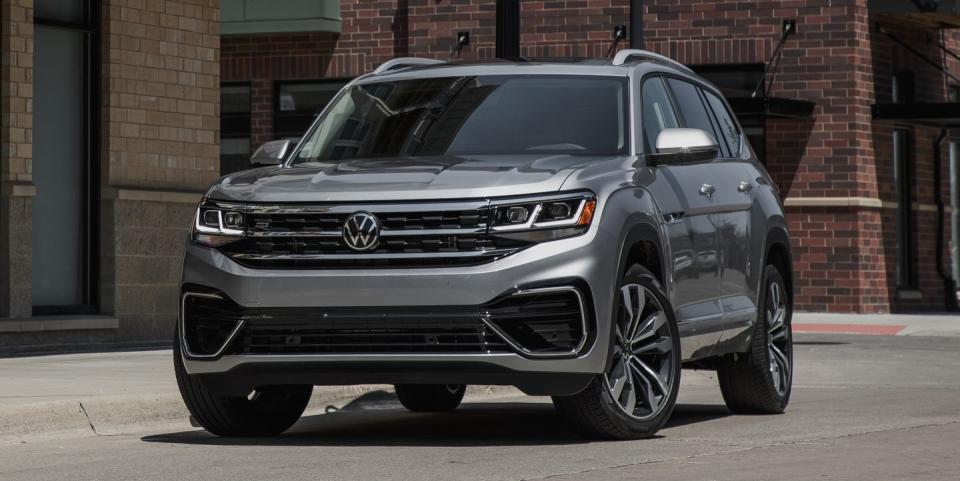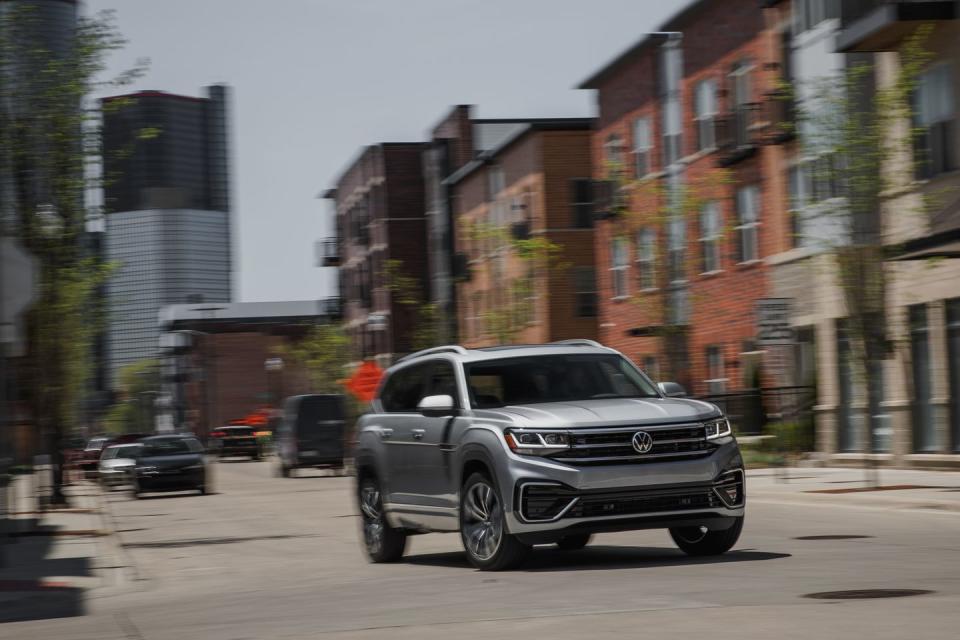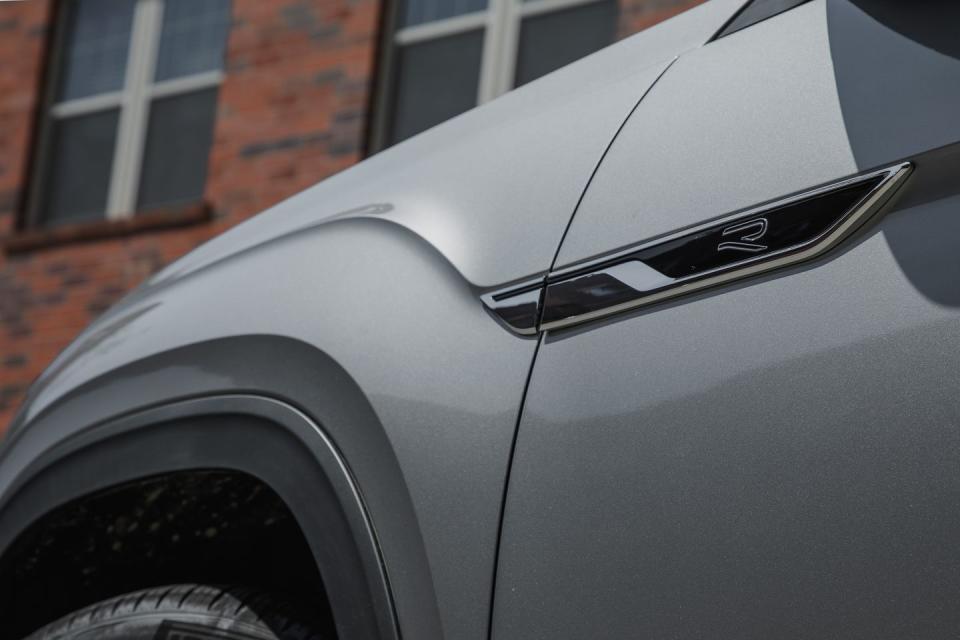2021 Volkswagen Atlas Has a Prettier Face and the Same Great Space

Look at enough crossovers, and they tend to blur into a homogeneous blob of inoffensive two-box shapes—useful, yes, but seldom interesting. The crossover is a jack of all trades, master of none, except for the one that involves making money for automakers. At that, crossovers are very good, and the three-row Atlas SUV has been one of Volkswagen's most profitable money printers since it debuted a few years back. The refreshed 2021 models are rolling out now, complete with prettier styling and additional features. The big VW's basic stats don't distinguish it from its peers, but Volkswagen is hoping that its looks and value will.
What's New with You, VW?
The face of the Atlas has transformed overnight from generic to handsome, with a more prominent grille bearing VW's new logo and more naturally integrated headlights. Its front and rear bumpers have also been reshaped and add 2.4 inches to the crossover's overall length. The interior is virtually untouched compared with the 2020 model, but there are revised controls and a new steering wheel with a more substantial feel. A wireless charging pad located beneath the center stack is now available, too. The Atlas gets enhanced adaptive cruise control with the addition of stop-and-go capability, and we confirmed that the improved lane-assist camera does a great job of smoothly centering the vehicle in its lane. Traffic-sign recognition also joins the crossover's roster of driver-assistance technology, which already included standard automated emergency braking, blind-spot monitoring, and rear cross-traffic alert.

The 2021 Atlas SEL R-Line that we sampled boasts the most obvious visual updates. Unlike other trim levels, the R-Line's unique jawline has a sportier flair thanks to large air intakes on either side of the lower grille. Along with stylized "R" badges and a gloss-black rear diffuser, the R-Line rides on huge 21-inch wheels with machined faces. The regular SEL starts at $43,415 and comes standard with a turbocharged 2.0-liter inline-four and 4Motion all-wheel drive. The SEL R-Line brings the naturally aspirated 3.6-liter engine—a narrow-angle V-6 with a single head that VW calls VR6—available with either front- or all-wheel drive. Our example was equipped with the latter, which contributed $1900 towards its as-driven price of $46,915. Our Pyrite Silver example came with the standard second-row bench seat as well as niceties such as an eight-way power driver's seat with memory settings, the Digital Cockpit gauge cluster, a heated steering wheel, and a panoramic sunroof. Notably, the R-Line models are order only, meaning you won't find them sitting in dealer stock.

Rather than offer many distinct option packages, VW bundles features according to trim, which is why there are seven trims. One exception is the $550 V6 towing package, which adds a receiver hitch to SE trims. (It's standard on SEL and SEL Premium.) You need to check that box to get the Atlas's maximum 5,000-pound tow rating. Without it, the Atlas can get a dealer-fitted hitch, but the tow rating drops to 2,000 pounds. Even with the factory package, though, VW insists on a proprietary wiring harness that'll require a dealer adaptor to hook up to standard U.S. trailers. Bogus.
An Oversized Golf? Not Exactly.
Since we've already spent more than 30,000 miles with our long-term 2018 Atlas V6 SEL 4Motion—which has the same exact powertrain as this 2021 SEL R-Line—we're familiar with its invasive engine stop-start system and respectable acceleration. The EPA estimates for the V-6 with all-wheel drive have dropped by 1 mpg in all categories to 16 mpg city, 22 highway, and 18 combined. That creates a more substantial gap between similarly equipped rivals, such as the Hyundai Palisade (19/24/21 mpg) and the Subaru Ascent(20/26/22 mpg). Those who still prefer the VW but want the thriftiest version should consider the front-drive four-cylinder model, which has government estimates of 21 mpg city, 24 highway, and 22 combined.

 Yahoo Autos
Yahoo Autos 